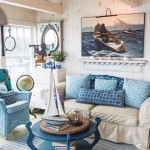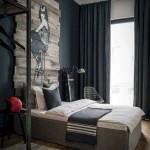Rustic Home Decor Ideas for Living Room
Rustic home decor evokes a sense of warmth, comfort, and connection to nature. It prioritizes natural materials, handcrafted elements, and a lived-in aesthetic that creates a welcoming and relaxing atmosphere within the living room. Unlike minimalist or modern styles, rustic decor embraces imperfections and celebrates the beauty of age and texture. It aims to create a space that feels both inviting and timeless, drawing inspiration from rural landscapes and simpler times.
The appeal of rustic design lies in its ability to transform the living room into a sanctuary, a space where one can disconnect from the fast-paced modern world and reconnect with the essence of nature and craftsmanship. The key to successfully implementing rustic decor is balancing its inherent ruggedness with elements of comfort and functionality. This involves careful selection of furniture, materials, colors, and accessories that complement each other and contribute to the overall rustic aesthetic.
Key Element 1: Natural Materials and Textures
The foundation of any rustic living room is the incorporation of natural materials. These materials provide the visual and tactile textures that define the style. Wood serves as perhaps the most crucial element, playing a significant role in furniture, flooring, and accent pieces. Reclaimed wood, with its inherent imperfections and unique character, is particularly favored for its history and sustainable appeal. Exposed beams, wood paneling, or even a rough-hewn coffee table can instantly introduce a rustic feel.
Stone is another essential material that adds a layer of rawness and authenticity to the living room. Stone fireplaces, accent walls, or even smaller stone features can create a focal point and enhance the natural ambiance. The texture of natural stone, with its variations in color and shape, lends visual interest and a sense of grounding to the space. Consider incorporating different types of stone, such as river rock, flagstone, or stacked stone, to achieve varied effects.
Beyond wood and stone, other natural materials like leather, wool, cotton, and linen contribute to the overall rustic texture. Leather furniture, throws, or cushions provide a luxurious yet rugged feel. Wool rugs and blankets offer warmth and comfort, while cotton and linen upholstery add a touch of softness and breathability. These materials should ideally be in natural or muted tones to complement the earth-toned color palette that is often associated with rustic decor.
Furthermore, consider incorporating natural fibers such as jute, sisal, or hemp for rugs, baskets, and other decorative elements. These materials add a subtly textured layer and reinforce the connection to the natural world. Woven baskets can serve as both decorative and functional storage, while natural fiber rugs provide a grounding element and a sense of warmth underfoot.
Key Element 2: Embracing Imperfections and Handcrafted Details
Unlike sleek, modern designs that strive for flawless execution, rustic decor embraces imperfections and celebrates the beauty of handcrafted details. This is where the genuine character of the style truly shines through. Furniture with visible knots, cracks, and variations in wood grain adds to the authenticity and charm of the living room. Instead of concealing these imperfections, highlight them as part of the overall aesthetic.
Handcrafted furniture and accessories are integral to creating a rustic atmosphere. Consider incorporating pieces made by local artisans or antique items with a story to tell. Hand-carved wooden accents, hand-stitched textiles, or hand-thrown pottery add a unique and personal touch. These artisanal elements convey a sense of craftsmanship and individuality that cannot be replicated by mass-produced items.
Distressed finishes are also a hallmark of rustic decor. Furniture with weathered paint, chipped edges, or a purposefully aged appearance adds to the lived-in and comfortable feel of the space. These finishes can be achieved through various techniques, such as sanding, staining, and dry brushing. The goal is to create an illusion of age and use, conveying a sense of history and authenticity.
Textiles also play a crucial role in embracing imperfections. Instead of opting for perfectly smooth fabrics, consider using materials with a slightly rough or uneven texture. Hand-woven blankets, quilts, or pillows add warmth and visual interest. Embrace the irregularities and variations in color that are inherent in handcrafted textiles. These imperfections contribute to the unique charm and character of the rustic living room.
Key Element 3: Earth-Toned Color Palette and Natural Lighting
The color palette of a rustic living room typically revolves around earth tones, reflecting the colors found in nature. This includes shades of brown, beige, gray, green, and terracotta. These colors create a warm, inviting, and calming atmosphere. Avoid bright, saturated colors, as they can detract from the natural and understated aesthetic.
Browns of varying shades are essential for grounding the space, representing the color of wood and earth. Beige and cream tones provide a neutral backdrop that allows the natural textures and materials to stand out. Grays, especially those with a slightly weathered or muted appearance, add a touch of sophistication and complement the rustic aesthetic.
Greens, particularly those inspired by foliage and landscapes, bring a sense of freshness and vitality to the living room. Consider incorporating shades of olive green, sage green, or forest green. These colors can be used for accent walls, upholstery, or decorative accessories. Terracotta, inspired by clay and earthenware, adds a warm and earthy touch, and can be used for pottery, tiles, or even wall paint.
Natural lighting is crucial for enhancing the rustic ambiance. Maximize natural light sources by keeping windows clear and unobstructed. Sheer curtains or blinds allow light to filter through while maintaining privacy. The natural light will highlight the textures and colors of the natural materials, creating a warm and inviting atmosphere. Where natural light is limited, incorporate warm-toned lighting fixtures. Avoid harsh, bright lights, as they can diminish the cozy feel of the rustic living room. Instead, opt for soft, diffused lighting that mimics the glow of natural light. Lamps with linen shades, sconces with warm-toned bulbs, and even candles can contribute to the overall ambiance.
In addition to ambient lighting, consider incorporating task lighting and accent lighting to highlight specific features of the living room. A floor lamp next to a comfortable armchair provides focused light for reading, while accent lighting can be used to showcase artwork or decorative objects. Carefully consider the placement and intensity of the lighting to create a balanced and harmonious atmosphere.
Beyond lighting, consider bringing nature indoors through plants. Houseplants add a touch of life and greenery to the living room, further enhancing the connection to the natural world. Potted plants, hanging baskets, or even a small indoor tree can create a sense of tranquility and freshness. Choose plants that thrive in indoor conditions and complement the rustic aesthetic, such as ferns, succulents, or snake plants.
By incorporating these key elements – natural materials and textures, embracing imperfections and handcrafted details, and an earth-toned color palette with natural lighting – one can successfully create a welcoming and timeless rustic living room. The goal is to create a space that feels both comfortable and authentic, a sanctuary where one can relax, reconnect with nature, and appreciate the beauty of simple living.
Details such as adding a large stone fireplace, or a faux fireplace, can add to the appeal. This is a focal point and conversation starter. It also reinforces the rustic motif that is being created in the space. Decorating the mantle with foraged items or found art will add to the natural feel. The important thing is to personalize the space and make it feel like home.
Another way to achieve a similar feel is to add live edge pieces to the space. These can be accent tables, shelves, or even wall art. The unique organic shape of live edge wood lends itself to the rustic atmosphere that is desired. These are often works of art in their own right, adding a unique point of visual interest to the space. Consider adding a sealant to protect the wood if it will be touched or used often.

25 Rustic Living Room Ideas Modern Decor And Furniture

30 Rustic Living Room Ideas For A Cozy Organic Home Decoist

55 Awe Inspiring Rustic Living Room Design Ideas

24 Best Rustic Decor Design Ideas In 2025 Home Inspiration

25 Rustic Living Room Ideas Modern Decor And Furniture

15 Rustic Home Decor Ideas For Your Living Room

Rustic Home Decor For Your Designcafe

Before After Modern Rustic Living Room Design Decorilla

Cabin Decor Ideas For Your Special Retreat Rustic Crafts Diy Home Design Interior

25 Rustic Living Room Ideas Modern Decor And Furniture
Related Posts







